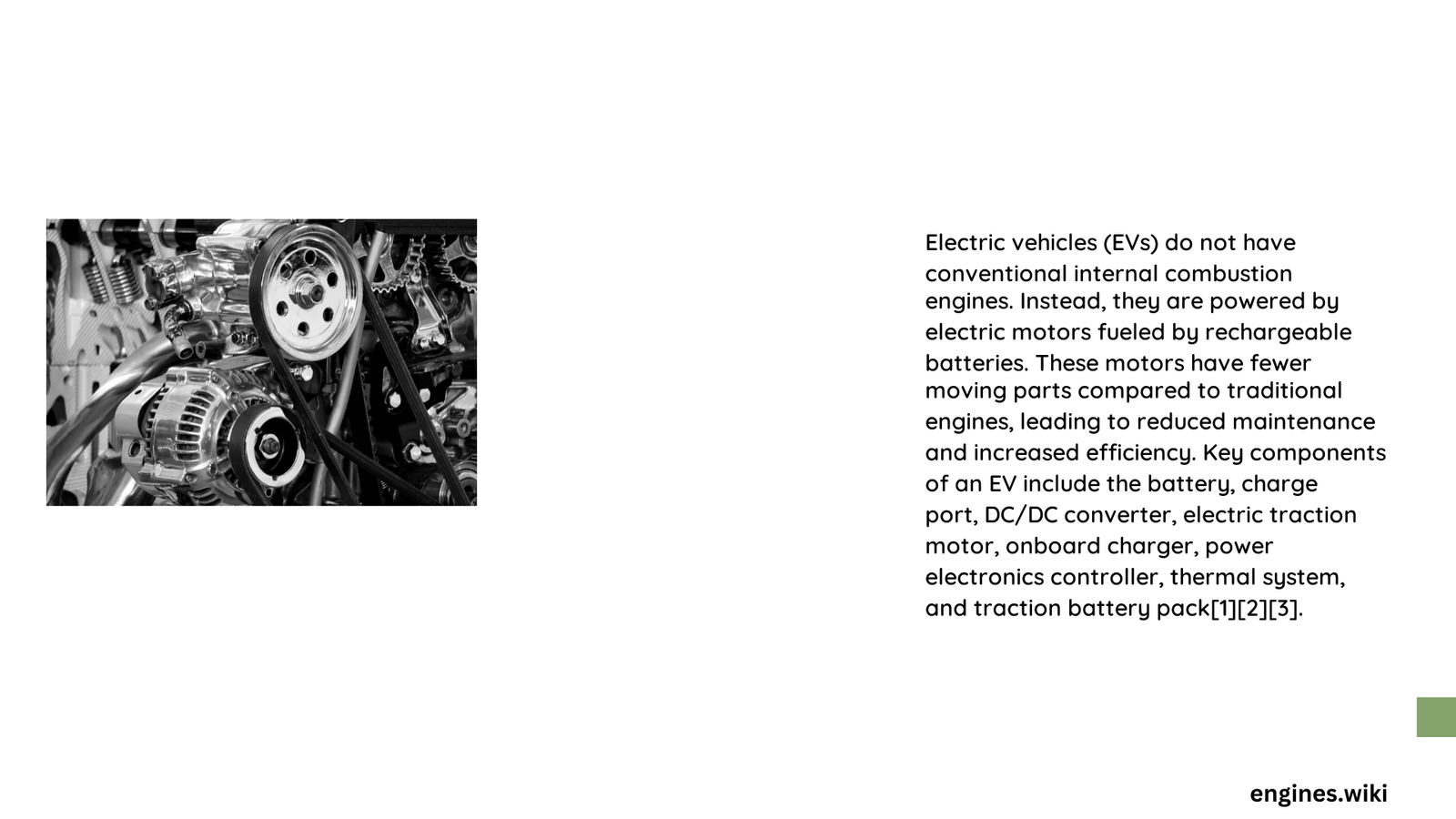Electric vehicles represent a groundbreaking shift in automotive propulsion technology, challenging traditional understanding of vehicle engines. Unlike conventional combustion-powered automobiles, electric vehicles utilize sophisticated electric motor systems that fundamentally transform how mechanical energy is generated and transferred to wheels, eliminating the need for complex internal combustion engines and introducing a more efficient, environmentally friendly transportation solution.
What Defines an Engine in Electric Vehicles?
Electric vehicles do not have traditional engines in the conventional sense. Instead, they employ electric motors that convert electrical energy into mechanical motion through fundamentally different mechanisms compared to internal combustion engines.
Key Differences Between Electric Motors and Traditional Engines
| Component | Electric Motor | Internal Combustion Engine |
|---|---|---|
| Energy Conversion | Electrical to Mechanical | Chemical to Mechanical |
| Moving Parts | Minimal | Extensive |
| Efficiency | 85-90% | 30-40% |
| Maintenance Complexity | Low | High |
How Do Electric Motors Function?
Electric motors operate through electromagnetic principles:
- Stator: Stationary outer component creating magnetic fields
- Rotor: Rotating inner component that generates mechanical motion
- Power Electronics: Manage electrical energy conversion
- Battery Pack: Primary energy storage system
What Components Replace Traditional Engine Systems?
Electric vehicles incorporate several specialized components:
- Battery Pack
- Primary energy storage
- Lithium-ion cell configuration
-
Provides direct current (DC) power
-
Electric Motor
- Converts electrical energy to mechanical energy
- Direct wheel drive mechanism
- High torque delivery
-
Multiple motor configurations possible
-
Power Inverter
- Converts DC to AC power
- Manages electrical flow
- Enables regenerative braking
Performance Characteristics of Electric Propulsion
Electric motors offer unique performance advantages:
- Instant torque delivery
- Smoother acceleration
- Quieter operation
- Lower maintenance requirements
- Reduced energy conversion losses
Technical Specifications of Electric Motors
- Power Range: 120-500 horsepower
- Efficiency: 85-90% energy conversion
- Weight: Significantly lighter than combustion engines
- Lifespan: Estimated 200,000-300,000 miles
Why Electric Vehicles Represent a Technological Revolution?

Electric vehicles fundamentally reimagine automotive propulsion by:
- Eliminating complex mechanical systems
- Reducing environmental impact
- Improving energy efficiency
- Simplifying vehicle architecture
- Enabling advanced digital control systems
Conclusion: Beyond Traditional Engine Concepts
Electric vehicles demonstrate that “engine” no longer means a combustion-based mechanical system. Modern electric propulsion represents a sophisticated, electronically controlled energy conversion platform that challenges traditional automotive engineering paradigms.
Reference:
– SAE International Electric Vehicle Research
– Electric Vehicle Technology Insights
– International Energy Agency EV Reports
